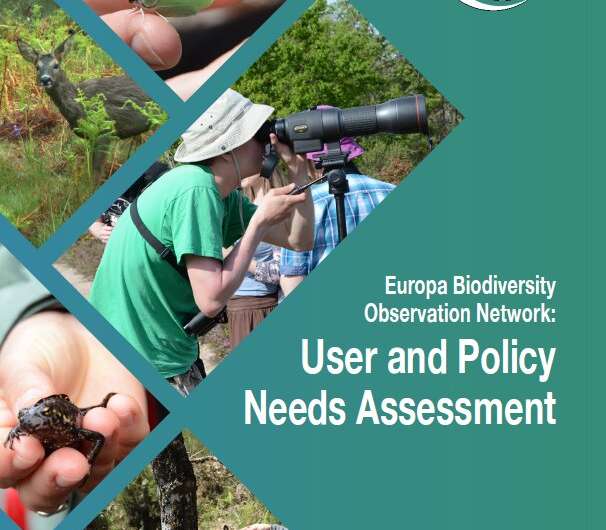Improving biodiversity monitoring in Europe

The European data landscape is highly fragmented in the area of biodiversity. A variety of different methods for data collection and analysis often makes it impossible to compare across countries the information that has been obtained. "In addition, many countries have difficulty even meeting the minimum biodiversity monitoring required by the European Commission," says Professor Henrique Pereira, who conducts research at Martin-Luther-University Halle-Wittenberg (MLU) and the German Centre for Integrative Biodiversity Research (iDiv) Halle-Jena-Leipzig and heads the "EuropaBON" (Europa Biodiversity Observation Network) project. The reasons for this are manifold: too little funding, insufficient technical capacities, a lack of support from long-term political goals, the inability to access data from the agricultural, energy and fisheries sectors, as well as a certain skepticism about changing existing methods.
Yet the monitoring of data could greatly help shape policies and guidelines in an evidence-based way, as the first policy report of the "EuropaBON" project shows. The pan-European project was launched in November 2020 with the task of developing a unified, comprehensive and equally practical approach to monitoring Europe's biodiversity and ecosystems. Since then, the team has conducted surveys, interviews and workshops with more than 350 representatives from science, policy and conservation. The specific aim was to obtain an overview of previous monitoring measures and the challenges associated with them, as well as to find initial approaches towards a common standard. "We are very happy about the stakeholder responses that paint a comprehensive picture of the current situation in many European countries. These now serve as the basis for a joint design of a new, multi-national biodiversity monitoring network in Europe with stakeholders from policy, science and society across Europe," says Professor Aletta Bonn, lead PI for the policy report, from the Helmholtz Centre for Environmental Research (UFZ), the Friedrich Schiller University Jena, and iDiv.
Consistent, high-quality biodiversity data is needed to meet the goals of the EU's 2030 Biodiversity Strategy. As part of this strategy, member states commit to restoring threatened or already destroyed ecosystems by 2030 and halting biodiversity loss. "The EU 2030 Biodiversity Strategy is currently at the core of the integrated policies. But to achieve its goals, European countries and the European Commission need more robust, comparable data at all scales," says Dr. Ian McCallum, co-lead for the report, from the International Institute for Applied Systems Analysis in Austria, adding that such data would help policymakers and scientists develop evidence-based targets and progress reports for conserving and restoring ecosystems and their services.
One particular method shows real promise for harmonizing the different approaches in Europe: the identification of so-called "Essential Biodiversity Variables" and "Essential Ecosystem Service Variables." In its report, the EuropaBON team presents a list of the 15 highest ranking variables that could be used in a common approach. These range from bird and marine fish biodiversity, to plant and invasive species distribution and land-use change. However, most of these 15 variables are currently not being monitored at all or are not monitored adequately in Europe.
More information: Hannah Moersberger et al, Europa Biodiversity Observation Network: User and Policy Needs Assessment (2022). DOI: 10.3897/arphapreprints.e84517
Journal information: Environmental Research
Provided by Pensoft Publishers


















